In the event that something happens to you, how far do you want doctors to go to revive you? Whom would you prefer to manage your affairs? What do you want to happen to your estate? These are questions that you would no doubt like answered if something unexpected happens and you’re unable to make these decisions.
Why you need estate planning
While everyone can benefit from estate planning, service members understand that military life can be particularly dangerous. Just like in civilian life, it’s not always possible to predict what will come next.
Estate planning allows you to decide what the future will be like for your family should something happen to you. Without the proper arrangements, the distribution of your assets can be somewhat unpredictable. If you make your intentions clear ahead of time, you can determine what happens to your personal assets, property and financial obligations.
This also makes plans for your health care clear should you become unable to make decisions for yourself. Without this, your family could be left with large amounts of debt from medical bills.
In addition to being pragmatic, estate planning can take a large load off your family’s shoulders. With everything arranged ahead of time, neither you nor your loved ones have to worry about certain decisions that would have to be made in the event you become disabled or deceased.
 The appearance of the U.S. Department of Defense (DoD) visual information does not imply or constitute DoD endorsement.
The appearance of the U.S. Department of Defense (DoD) visual information does not imply or constitute DoD endorsement.To help get your affairs in order, use the AFBA estate planning checklist
We’ve created a helpful checklist to assist you with estate planning. Included is a list of necessary steps for successful arrangements, such as:
Draw up a will
First, you’ll need to prepare a document that outlines some very important details. This means naming a personal representative and substitute to carry out your wishes, providing a full list of assets and organizing funeral and burial intentions, among other tasks.
An executor of estate needs to be named in this document. This is the person who’s responsible for ensuring your intentions are carried out. The executor is a very important person and should be carefully considered, as they will work with your attorney, identify and manage your probate assets (bank accounts, property, life insurance etc.) and handle your debts.
Arrange for power of attorney
If you become unable to manage your estate, a loved one or other trusted representative can do it for you. While you can revoke this determination at any time, it otherwise lasts for your lifetime.
Create a “living will”
This isn’t the same thing as a traditional will. The living will decides what health care you do or don’t want should you become unable to make decisions for yourself. For example, to what extent should doctors try to resuscitate you? Do you want to be placed on a ventilator if needed to keep you alive?
Gather necessary documents
Personal documents, bank accounts, income tax information and various other papers and pieces of information need to be consolidated. This includes passwords for your online accounts, especially your banking credentials.
You don’t have to do all of this on your own. These steps can be made easier if you appoint a law firm to help you.
Help your loved ones by making plans for the future
There are many unknowns in life, both for civilians and active duty service members. With estate planning, you can get your affairs in order and be more certain of what happens to you and your loved ones. While you may not be able to predict what the future holds, you can still plan for it.
Every November since 1993 has been federally recognized as Military Family Appreciation Month. During this month, several military-themed holidays are celebrated. This period is a great opportunity to show your appreciation for both veterans and military families who have loved ones in the armed forces. If you know any of these people in your life or just want to anonymously help out with those you might not know, November is the perfect time to show them you recognize the uncommon challenges they go through.
Military families serve along with their loved servicemembers. They are aware of the risks involved in serving in the armed forces as well as the sacrifice of being away from them during long periods of training and deployment.
The history of Military Family Appreciation Month
In 1993, the Armed Services YMCA looked for a way to honor military families and recognize their sacrifice, dedication, and contributions to the armed forces which they’re an intrinsic part of. Thus, they came up with Military Family Appreciation Month as a time to do exactly that. After being officially endorsed by the President of the United States, November was chosen as the month in which the observation would take place.
 The appearance of the U.S. Department of Defense (DoD) visual information does not imply or constitute DoD endorsement.
The appearance of the U.S. Department of Defense (DoD) visual information does not imply or constitute DoD endorsement.What military-related holidays happen in November?
Several important holidays take place in November, and they’re perfect opportunities to plan out your shows of appreciation.
First is the Marine Corps’ Birthday on Nov. 10. This originated in 1921, when Marine Corps Order No. 47 was issued. This order intended to commemorate the founding of the Marine Corps and directed that it be repeated each year on the same day. This day is typically commemorated with the annual Marine Corps Birthday Ball. First held in 1925 and observed every year since, the ball includes entertainment, cake, and a formal dinner.
The celebration of the Marine Corps’ birthday has evolved over the years. In 1923, a formal dance was held at the Marine Barracks in Ft. Mifflin, Pennsylvania. Meanwhile, a mock battle occurred at the Washington Navy Yard, and a baseball game was held at Guantanamo Bay, Cuba. Later, in 1925, the first official Birthday Ball was held in Philadelphia. The cake-cutting ceremony began in 1952, which included the first piece of cake being presented to the oldest Marine present and being passed to the youngest as a symbol of the tradition passing.
After that is Veterans Day on Nov. 11. This day is especially important, as it is a federally-recognized holiday specifically meant as a day to pay respect to veterans. The day was originally known as Armistice Day to commemorate the end of World War I, but was later expanded to include all veterans.
Thanksgiving is also a part of Military Family Appreciation Month as one of the ideal times to give thanks to the people in our armed forces who have dedicated their lives to keeping America and its citizens safe from harm. Military families at the Thanksgiving table can use this opportunity to appreciate their loved servicemembers, while non-military families can take the time to show respect to both servicemembers and their families.
However you choose to recognize the holidays during Military Family Appreciation Month, it’s important to always give thanks both to servicemembers and their families so they know they’re loved and appreciated. In addition to the ever-important respect toward the members of the armed forces themselves, remember that the families of servicemembers have their own unique challenges to tackle every day and they deserve recognition just as much as their cherished servicemembers do.
First observed in 1968 by President Lyndon Johnson as Hispanic Heritage Week and later broadened into 30 days and enacted into law by President Ronald Reagan Aug. 17, 1988, Hispanic Heritage Month runs from Sept. 15 to Oct. 15 every year. The month is a recognition and celebration of Hispanic people including those in the armed forces as well as first responders, as there are many unique and notable Hispanic service members, police, firefighters and paramedics all deserving of our honor.
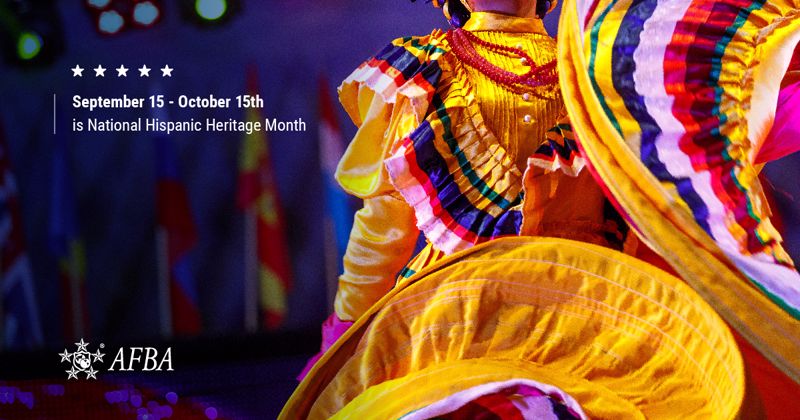
Staff Sgt. Henry Meza: "He's going to be a soldier."
Staff Sgt. Henry Meza, a Honduran-born member of the Iowa National Guard, had the idea from a very young age that he was destined to serve. His grandmother used to say to friends and family, "He's going to be a soldier."
Growing up in his birthplace of Siguatepeque, Honduras, which had no electricity, Meza helped out with his family's coffee business by working on a farm. He regularly hauled 100-pound bags of coffee beans on his back at the age of 10. When he was 12, he immigrated to the U.S. to join his mother in New Jersey. Having been very active in school with track, wrestling and soccer, he earned a sports scholarship to Grand View University in Iowa. In 2012, he enrolled in the Iowa National Guard.
Meza found a special place in the National Guard's Service to Citizenship program, which helps relatives of young adults in the Guard become U.S. citizens. Meza, who gained citizenship in 2013, is well aware of how arduous the process can be without assistance from initiatives like these. Speaking of the program, he says diversity makes the National Guard more capable by connecting the military branch to different cultures and walks of life. When those people see others who share the same culture, they're more inclined to join the Guard, he says.
Sergeant Diana Munoz: The first Hispanic police sergeant in Greenville, S.C.
Diana Munoz knows that when first responders answer a call from a Hispanic family, they might be wary of trusting them. But when Munoz, who was born in Colombia, South America shows up, they're immediately put at ease.
A historic figure in Greenville, S.C., Munoz was the first Hispanic police sergeant to serve in the town's police department. As a supervisor, she's responsible for officers both in the Law Enforcement Center and when they're outside and on-duty.
Munoz hopes to one day be a police captain, though she acknowledges that she has a lot of work to do to reach that goal.
Joining Forces With the First Fully Spanish SNCO Course
New Mexico Air National Guard Master Sgt. Diana Melero-Sena participated in the first International Senior Noncommissioned Officer Course hosted completely in Spanish at Joint Base San Antonio-Lackland, Texas, between Oct. 4 and Dec. 8, 2021. Taught in the course were core leadership principles, ways to unite different forces and best practices meant to inspire the formation of strong professional relationships. Melero-Sena was one of two Citizen-Airmen who enrolled. The proud daughter of Mexican immigrants, she said that when she heard the Inter-American Air Forces Academy (IAAFA) was hosting a fully Spanish SNCO course, she knew she had to attend.
As the National Guard knows, with diversity comes strength. People of different cultures feel they have a place in the Guard because they see others sharing their culture within it. With the theme of 2022's Hispanic Heritage Month being "Unidos: Inclusivity for a Stronger Nation," the period reminds us that Hispanic Americans and everything they bring from their different cultures stand out as invaluable and integral parts of American society.
On February 11, 2022, Carlos Del Toro, the Secretary of the Navy, extended the Secondary Caregiver Leave(SLC). This means that paternity leave is no longer two weeks but is now three weeks and provides up to "21 days of non-chargeable leave to parents who are designated as secondary caregivers per the Military Parental Leave Policy." The same is true of the Marines. Instead of paternity leave, it is called secondary caregiver.
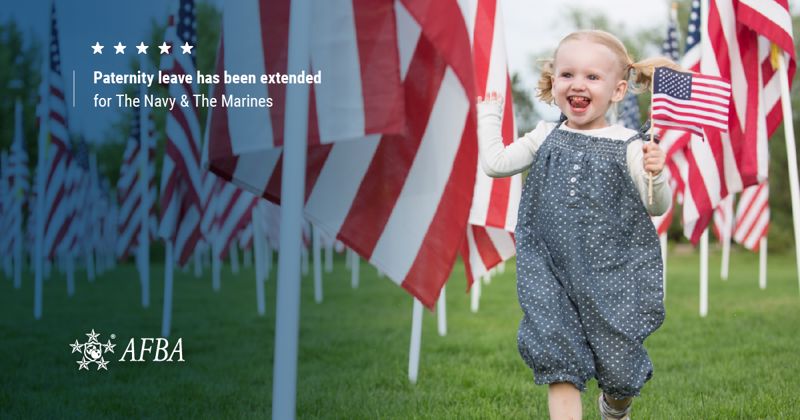
The Navy
According to a Navy press release, "This policy change aligns secondary caregiver leave duration in the Navy and Marine Corps with that in the Army and Air Force. The extension to three weeks comes in advance of an increase to twelve weeks authorized in the recently enacted NDAA, which will become effective at the end of 2022." The leave is non-chargeable which means that it does not "count against a member's earned leave balance.
Vice Adm. John B. Nowell, Jr. the chief of naval personnel was quoted several times in the press release.
"Navy is dedicated to supporting our new parents, and we fully understand that our families are as much a part of our service as our Sailors," he said.
Keep in mind that sailors who are currently on parental leave are not eligible for more time. However, those who are about to embark on their leave can take the full 21 days.
The Marines
Following suit, the Marines also extended their second parent leave during the beginning of their child's life. Del Toro said in the Marines' press release. "The expansion of caregiver leave will provide additional relief to the families of Marines and Sailors, further improving Marine and family readiness, as well as recruiting, retention, and overall talent management of the force."
While this change was not anticipated by some, it reflects the Department of Defense's emphasis on family and community connection during difficult times. Note that the Secondary Caregiver Leave can be taken at the same time as a Maternity Convalescent Leave. This is because it is part of the bigger program which is called the Military Parental Leave Program.
The Army and Airforce
The army and airforce increased their paternity and secondary caregiver leave several years ago. The Airforce did this in 2018. Its press release at the time said, "effective immediately, the new policy applies to Total Force Airmen who are birth mothers and fathers, same-sex couples, as well as adoptive and surrogate parents."
The Army extended its leave in 2019, citing that it wanted to increase its members' flexibility as it relates to family reunification. The branch doubled its parental leave for secondary caregivers and added more for maternal leave. On January 23, 2019, the Secretary of the Army at the time, Mark T. Esper signed this directive.
Now, the Marines and the Navy have the same orders and the opportunity for the secondary caregivers to bond with their newborn babies
February 4th is the official creation day for the United Service Organizations (USO). The USO has been a fixture in military life for over 80 years. Let's dive into the history of the USO and how it impacts the modern military. According to their website, "Since 1941, the USO has been the nation's leading organization to serve the men and women in the U.S. military, and their families, throughout their time in uniform. From the moment they join, through their assignments and deployments, and as they transition back to their communities, the USO is always by their side."
An organization with a history
The organization was founded in 1941 and is private and not-for-profit. It also works with the Department of Defense (DOD). The organization was first formed in WWll to boost the morale of the troops and to encourage American citizen involvement in the war effort. President Franklin D. Roosevelt's goal was to foster more support for the men fighting overseas, which was much needed at the time. In fact, several preexisting organizations and associations were combined to create the USO. They were:
- The Salvation Army.
- The Young Men's Christian Association.
- The Young Women's Christian Association.
- The National Catholic Community Services.
- The National Travelers Aid Association.
- The National Jewish Welfare Board.
Most notably, the USO provided live entertainment to the troops and their families, which included comedians, actors and musicians. In addition, they also created social facilities for those in need, which they still actively do. Though they were disbanded between the end of WWll and the beginning of the Korean War, the USO was revived for the latter war and continued through the entirety of the Korean War, the Vietnam War, Lebanese peacekeeping, Gulf War, Afghanistan and the Iraq war.
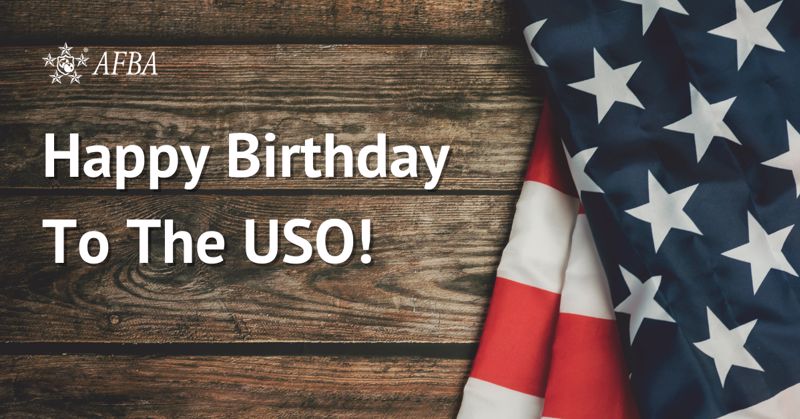
The USO today
Today, USO still provides important resources to those who are members of the military community. They have over 200 locations in 14 countries and 27 US states. The USO has over 250 centers that "extend to countries on every continent, operated by thousands of staff and volunteers whose goals are to match our service members' vigilance and provide best-in-class service to those who sacrifice so much for America," according to their website.
Services provided
The USO is a service that is provided to troops both while they are deployed and after deployment. They are also available for military families. Here is a short list of just some of the services offered:
- Operation Phone Home: The project offers military members internet connections and potential phones. 2.8 million minutes of free talk time and 760,000 wifi sessions were logged by service members connecting with their families in 2019.
- USO Care Package Program: You or someone you know can send a care package to the troops overseas.
- Entertainment: USO has provided more than 8.1 million center celebrity visits across the world.
- Transitioning Service Members and Military Spouses: The organization offers support and services to those who are transitioning to a new point in their service.
The USO has been around for over 80 years to provide different kinds of support to the military as a private, non-government entity. On February 4th, 2022 consider donating in celebration of the organization's birthday.
For some, Memorial Day simply represents a three-day weekend and the unofficial beginning of summer. But for many of us, Memorial Day commemorates and celebrates those brave soldiers who sacrificed their lives for the country.
The history and traditions of Memorial Day go back a long way, from the history of casual observances to the first official observances in the U.S. Today.
Origins of Memorial Day
Since antiquity, people have remembered fallen soldiers with parades and memorials.
In the U.S., the first traces of what would become Memorial Day began a few weeks following the end of the Civil War. On May 1, 1865, a regiment of African American Union troops along with more than 1,000 newly freed individuals, marched a procession into a former prisoner of war camp in Charleston, South Carolina. There, the group consecrated a burial site for the more than 250 prisoners who died of disease or exposure. They sang hymns, recited Bible verses and scattered flowers on the graves of the fallen.
Then, on May 5, 1866, the city of Waterloo, New York, held a community-wide ceremony honoring the local Civil War veterans. Residents flew flags at half-mast, businesses closed for the day and vigils were held.
Three years later, in 1868, the Grand Army of the Republic (GAR) established Decoration Day as May 30. The idea was to decorate the graves of the fallen soldiers with flowers, and this day was chosen as many flowers would be in full bloom. Though some legends say this was chosen because no Civil War battles took place on May 30.
May 30, 1868, marks the first observance of Decoration Day. Ceremonies were held at Arlington National Cemetery with General Ulysses S. Grant presiding over the solemn occasion. Small American flags and flowers were placed on the graves of soldiers, a tradition that carries through to this day.
Since that time, however, more than 25 different locations around the country have claimed to be the birthplace of Decoration Day or Memorial Day. In 1966, President Lyndon Johnson and Congress declared Waterloo, New York, as the original home of Memorial Day. Then, in 1971, Congress passed an act declaring Memorial Day a national holiday, and moving the day of remembrance to the last Monday in May.
Memorial Day's Legacy Continues
Although it's been a long journey from the original Decoration Day to the holiday as we know it, today, the tradition and legacy of Memorial Day holds strong across the country and the U.S. military bases around the world.
Most recently, Congress passed the "The National Moment of Remembrance Act" and President George W. Bush signed it into law in December 2000. The act encourages all people in the U.S. to give something back to their country, and to help coordinate commemorations in honor of those who gave their lives in service for the country.
The National Moment of Remembrance is at 3 p.m. on Memorial Day. Remember our fallen soldiers during this moment of silence at your local time.
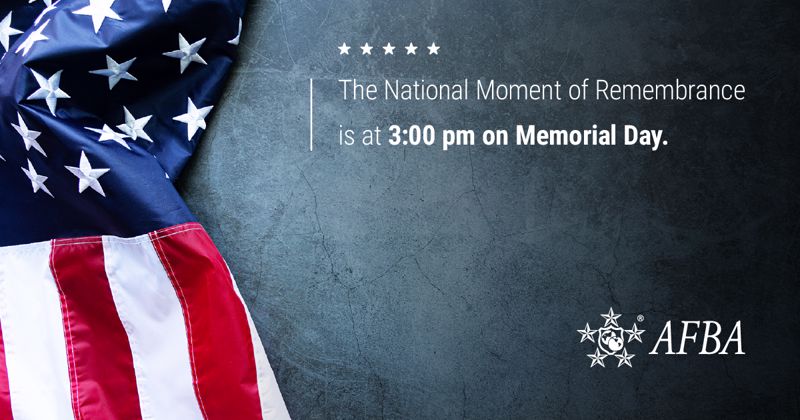
This can be done anywhere you are, even if you're out with friends or at a cookout with family. Spread the word about the National Moment of Remembrance to help ensure everyone understands what this serious day means for servicemembers and their loved ones.
Every year on the third Saturday of May, the United States comes together to celebrate and honor our active-duty servicemembers for Armed Forces Day. This day falls toward the end of Armed Forces Week.
This holiday provides Americans the opportunity to acknowledge the contributions of active-duty servicemembers in all six branches of the U.S. military, including the newly formed Space Force, as well as National Guard and Reserve components.
The history and significance of Armed Forces Day
In 1947, President Harry S. Truman signed the National Security Act, which unified the four branches of the military under the Secretary of Defense.
To honor this unification, U.S. Secretary of Defense Louis Johnson announced the creation of an Armed Forces Day on August 31, 1949. The aim was to consolidate the then-current individual Army, Navy, Marine Corps and Air Force Days, which all fell on different dates. These branches still celebrate their own days in addition to the joint observance.
In an excerpt from the Presidential Proclamation on the creation of the Armed Forces Day, President Truman said:
"Armed Forces Day, Saturday, May 20, 1950, marks the first combined demonstration by America's defense team of its progress, under the National Security Act, toward the goal of readiness for any eventuality. It is the first parade of preparedness by the unified forces of our land, sea, and air defense."
This holiday differs from other military and service-related holidays, such as Memorial Day or Veterans Day, which are for honoring fallen soldiers.
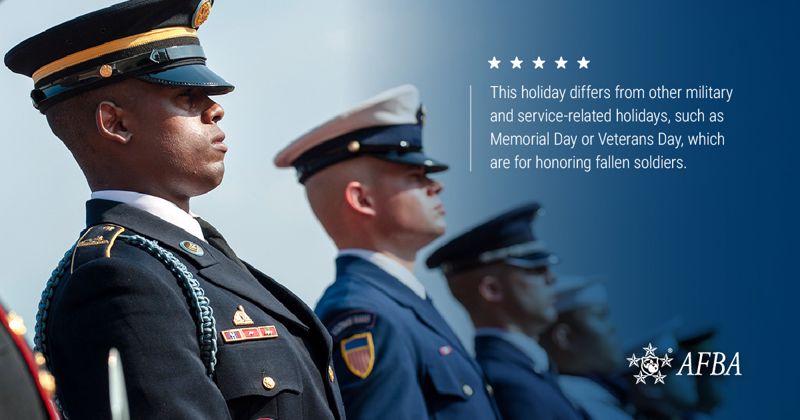
How you can celebrate and Observe Armed Forces Day
If you're close to a military base, many of them host parades, open houses, festivals, parties, picnics, receptions and, in some cases, even air shows.
For instance, the city of Bremerton, in Washington State, has been hosting its Armed Forces Day Parade for more than 70 years. The city is home to the Puget Sound Naval Shipyard and the Bremerton Annex of the Naval Base Kitsap. With average annual attendance of 25,000 to 40,000 spectators and participants, this parade is quite the spectacle to behold. Although this momentous event has had to be greatly scaled back due to the pandemic, its organizers are confident in returning to full force when it becomes possible.
If you're unable to travel to a military base, there are still plenty of options to observe this day.
You can:
- Organize a "Support the Troops" bike rally — either motorcycle or bicycle — and ride around your neighborhood to raise awareness.
- Visit a local public military display, such as a memorial or cemetery. These are good places to pay your respects, while also potentially learning some new information about a historical event and the personnel involved. Sometimes these locations will also host seminars, musical performances or ceremonies on Armed Forces Day.
- Keep it simple and host a barbecue with family and friends, or go on a picnic. This will also provide a great opportunity to spread awareness and raise understanding of this special day that honors those who sacrifice so much.
In addition, some stores and restaurants offer discounts and special deals for servicemembers and their families on these days.
Each year in April, families, communities and people of all stripes come together to celebrate military children and applaud them for surmounting unique challenges.
The Department of Defense Education Activity (DODEA) commemorates this month with its "Purple Up!" campaign, in which people wear and display the color purple to show support for the children of soldiers. The military chose this color with the reasoning that purple combines each branch's colors into one, since the Air Force, Navy and Coast Guard all use shades of blue, the Army uses green and the Marines use red.
Month of the Military Child: A backstory
Established by former Defense Secretary Caspar Weinberger in 1986, the Month of the Military Child has since become an annual tradition for military families deployed worldwide. More than 1.7 million total force-dependent children across the globe face obstacles unlike most others their age. Wearing purple helps let them know you care.
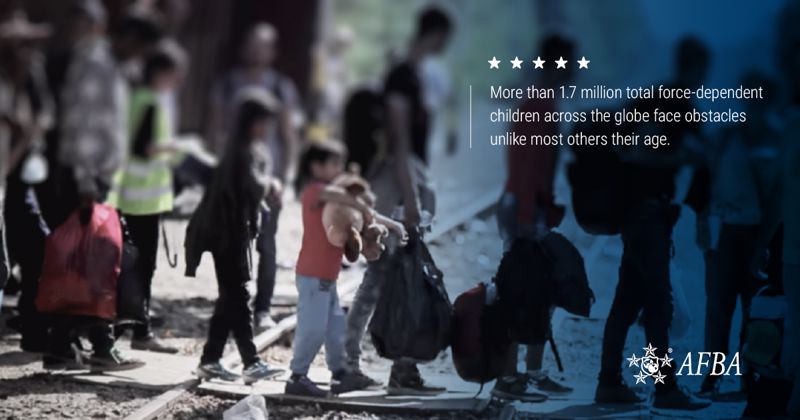
While the entire month of April is set aside to celebrate children of soldiers, the military also designates a single day during the month as "Purple Up! For Military Kids" Day. This typically falls halfway through the month, at or around April 15 each year.
Many military-related private organizations put a special emphasis on the programs they administer and provide downloadable toolkits and other resources for military children and families.
Additionally, participating Exchange restaurants worldwide will often offer free treats or other specials for any child who wears purple during the month.
How you can Purple Up! this April
Although schools and workplaces are not closed for Purple Up! Day, there are still plenty of creative ways to observe this important occasion. Many military bases and communities celebrate with special events, such as contests, parades, fairs and seminars all centered around the central message of supporting military children.
In addition to wearing purple throughout the month, anyone not currently stationed at a military base can consider trying some of these activities to observe the Month of the Military Child:
- Work with local schools, governments, businesses and organizations to raise awareness of this observance.
- Spread the word by using the #purpleup hashtag on social media or putting up purple flyers in community centers.
- Write a letter to your local newspaper that recognizes and celebrates military children.
- Create an award, or use one created by Blue Star Families, to let a military child know that they're awesome.
- Print out and pass around Purple Up! labels from the Military Child Education Coalition.
If you're already involved with the local schools and organizations, consider holding an award ceremony for military children. Be sure to include recognition of military children during morning announcements and have members or students tie purple ribbons around trees outside.
For more ways to celebrate our country's youngest heroes, check out these 50 additional ideas from the Military Child Education Coalition.
Nearly 100 years ago in 1926, Carter G. Woodson, a scholar of African American history and the African diaspora, set aside a week in February for the recognition and remembrance of Black history. Fifty years later during the U.S. bicentennial, President Gerald Ford extended this into the federal observance now known as Black History Month.
Ford urged the nation to "seize the opportunity to honor the too-often neglected accomplishments of Black Americans in every area of endeavor throughout our history."
This February, we are honoring the accomplishments of Black servicemembers in the armed forces by sharing a timeline of several notable firsts that contributed to key turning points in military history, from 1770 to the present.
1770: Crispus Attucks, first American casualty in the Revolutionary War
Crispus Attucks, a former enslaved person and dockworker of African and Native American descent, joined a group of Boston patriots in protest against British soldiers. He was fatally shot, becoming the first American to sacrifice his life in defense of the colonies. Tens of thousands of Black soldiers would ultimately serve in the Revolutionary War. Attucks was honored at the time of his death and would later become a symbol for the abolitionist movement.
1863: William Carney, first Black Medal of Honor recipient
William Carney enlisted in the first Black unit recruited for the Union Army — the 54th Massachusetts Infantry Regiment — where he served alongside 40 other Black service members. When the unit's color guard was shot during battle, Carney sustained enemy fire and nearly lost his life in an effort to ensure that the American flag did not touch the ground. His moving and valiant patriotism was acknowledged in 1900 with the Congressional Medal of Honor. As of 2020, 92 remarkable Black servicemembers have since been awarded the Medal of Honor.
1917: Harlem Hellfighters, first all-Black combat unit to serve overseas during WWI
During the First World War, the 369th Infantry regiment — known as the Harlem Hellfighters — became the first Black combat unit to serve overseas. The U.S. did not offer combat roles to African Americans, so the unit was assigned to the French Army. The Hellfighters served in the trenches for 191 days straight without getting captured or ceding any ground, earning them the Croix de Guerre.
1946: Della Raney, first Black woman to serve as an Army major
In 1941, nursing graduate Della Raney became the first Black nurse to serve as a lieutenant in the U.S. Army Nurse Corps. As the Second World War continued, Raney continued as a trailblazer in the Army, marking new firsts with each promotion. She was promoted to captain in 1944 and major in 1946. Maj. Raney continued her Army service until her retirement in 1978.
1941: Tuskegee Airmen, first Black military aviators
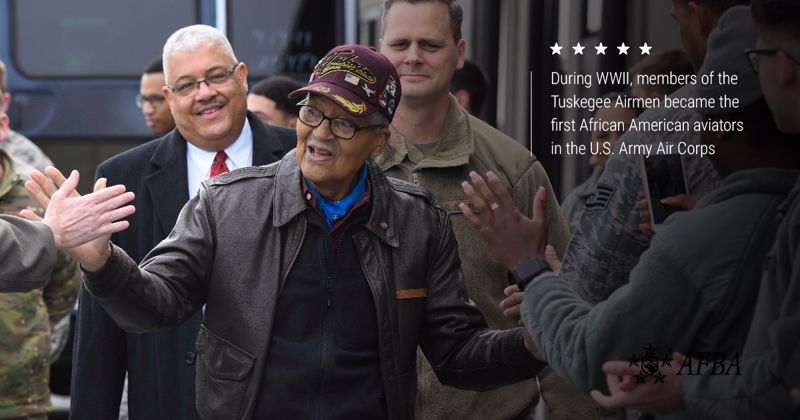
During WWII, nearly 1,000 members of the Tuskegee Airmen trained in the Jim Crow South and became the first African American aviators in the U.S. Army Air Corps, the precursor to the U.S. Air Force. They never lost an escorted plane to enemy forces despite completing hundreds of escort missions and more than 15,000 sorties. The Tuskegee Airmen earned 150 Distinguished Flying Crosses and are being recognized in 2021 with a commemorative quarter inscribed, "They fought two wars."
1989: Colin Powell, first Black Chairman of the Joint Chiefs of Staff
When he was appointed as the Chairman of the Joint Chiefs of Staff by President George H.W. Bush, Colin Powell took on the highest-ranking military position in the Department of Defense and became the first African American and youngest person to do so.
Present day
According to the latest data, roughly 224,000 servicemembers and about 2.1 million military veterans are Black Americans. These brave men and women have continued making a mark on military history thanks to their courageous contributions and service to the nation.
The U.S. Army recently announced several major updates to Army Regulation 670-1, Wear and Appearance of Army Uniforms and Insignia, slated to go into effect Feb. 24, 2021. Here is a look at some of the key revisions as well as the reasoning behind the changes.
A people-first approach
As part of the Army's Project Inclusion, instituted in mid-2020, the topics of hair and grooming have come under question. Current guidelines have been critiqued for being discriminatory against various groups, including Black Soldiers and women in the Army. The revised regulations aim to minimize racial bias and promote a more inclusive approach.
"The Army must continue to put people first by fostering a culture of trust that accepts the experiences and backgrounds of every Soldier and civilian," said Deputy Chief of Staff for Personnel, Lt. Gen. Gary Brito, in an announcement. "Our diverse workforce is a competitive advantage, and the Army must continue to offer fair treatment, access and opportunity across the force."
Newly authorized hairstyles are intended to promote healthy, natural hair for all Soldiers
As for hair, a wider range of styles will now be accepted. Previously, women were required to style their hair in a low, tight bun. As this can lead to hair loss, the updated regulations specify that styles such as long ponytails and braids may be worn. They can be tucked into a Soldier's uniform to prevent snagging, and are expected to improve the fit of combat helmets.
"In an effort to stop hair damage and loss stemming from hairstyles like the bun, the Army approved healthier hairstyle options that are more inclusive of various natural styles," explained Sgt. Maj. Mark Anthony Clark.

Furthermore, the Army has loosened strict requirements related to cornrows, braids, twists and locks which may be worn by Black servicemembers. Soldiers were previously permitted one such style at a time, with individual sections limited to half an inch in width. The width requirement has been removed, and Soldiers may now opt for more than one of these styles at a time.
Highlighted hair that maintains a natural appearance will also be permitted, although vibrant, artificial hues like blue, green and purple are still not authorized. A Soldier's dyed or bleached hair color "doesn't necessarily have to be a color that is typically seen on a certain ethnic group," explained Master Sgt. Quintana Mitchell.
In an attempt to improve cultural sensitivity within the grooming regulations, words describing particular styles, such as "Mohawk" and "Fu Manchu," are also being revised in favor of verbiage that is less offensive and more descriptive. New images have also been produced to provide clearer detail about the authorized and unauthorized styles.
Additional grooming guidelines support self-expression and safety
Once the new regulations are in place, simple gold, silver or diamond stud earrings will be authorized for women in most non-combat contexts. Additional lipstick and nail polish colors are being added to the list of accepted cosmetics for women. Male Soldiers will also be permitted to wear clear nail polish, either as a grooming choice or in order to protect their nails while working with rough tools and harsh chemical agents.
"Our identity is important," said Sgt. Maj. Brian Sanders in an Army announcement. "If we care about people first and the Soldier as a whole, we have to care about the many aspects to who they are as well. This is a small, but significant change that positively impacts a considerable size of our force."
"I use the analogy, 'If you look good, you feel good — and if you feel good, you perform [well]," Sanders added, explaining that this more inclusive approach to personal appearance and grooming may result in productivity improvements.

